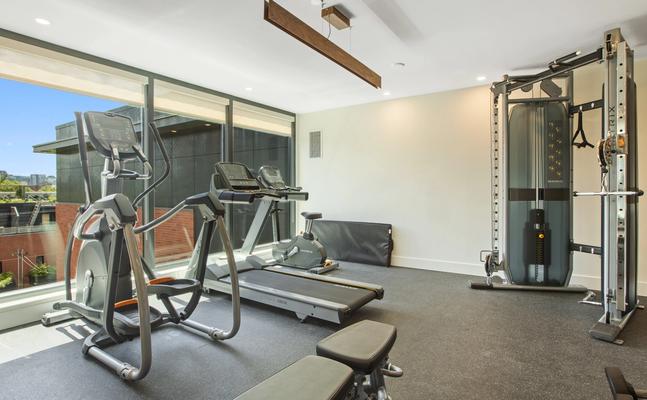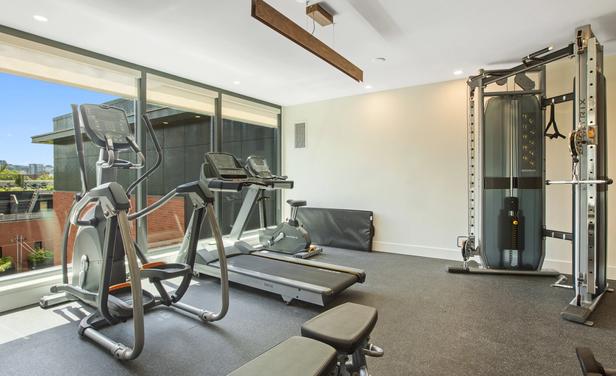Subscribe to our newsletter
A version of this article was originally published on Multifamily Insider in April 2023.
Access control is a cornerstone to effective property management, with applications in nearly all facets of community operations. While access is often discussed holistically on the property level, it can be optimized by deployment location to enhance team efficiency, property performance, building integrity, and resident satisfaction.
Access control systems can also be customized for each community, and designed to optimize the user experience. Deployed strategically, access control can enhance both the first impression for visiting prospects and the day-to-day living experience for residents. Seamless yet exclusive access to various points throughout the community demonstrates a level of coordination and professionalism that prospects can expect at the community, increasing lead-to-lease conversion. Residents accustomed to living with thoughtfully executed access controls will recognize the shortcomings and inefficiencies that exist elsewhere, boosting renewal rates.
Operators can unlock the NOI potential of their communities and augment operations by upgrading access controls across their communities. Here is a breakdown, by location, of strategic access control opportunities.

Perimeter & Common Areas:
Monitoring and restricting access at the exterior access points are essential to effectively manage foot traffic into buildings from the perimeter. The designated use of the particular building being accessed, and the anticipated volume of traffic through the access point, will determine the access control technology that is deployed.
SmartRent, for example, averages 10-15 controlled access door/gate installations as well as common areas and amenity spaces per community. Understanding where, when, and how a perimeter access point needs to be controlled allows operators to purposely direct and maintain the traffic flow through their buildings.
Buildings with a primary perimeter entrance through which most foot traffic is funneled will require access controls that enable it to be locked on a schedule and during non-business hours. Other doors to the same building may remain locked at all times from the outside while providing free egress from within. Such capabilities are typically enabled through panic bars or commercial storefront handles that stay locked but allows anyone within to exit without unlocking or relocking the door.
Areas like leasing offices or clubhouses may have restrictions or schedules for non-associates entering on different days or times of day. Garage gates, as well as access points within the garage leading into the rest of the community, elevators, and designated guest entryways, will require 24-hour credentialled access and self-closing functions to prevent unauthorized entry.
Self-guided Tours:
Leveraging access control technology to bolster lease conversion begins with the tour process. Particularly during self-guided tours (SGT), access controls facilitate an impressive, autonomous prospect experience. Smart access control systems allow operators to issue temporary access credentials, allowing prospects to seamlessly navigate the community and view specified homes and amenity spaces. While most properties are fully staffed during daytime hours prospects are still open to engaging in a self-guided tour—smart access control allows them to do that without the need for an onsite team member to join them.
In fact, 56% of SmartRent SGTs are launched as “Tour Now,” meaning a prospect is onsite and is proactively launching a tour via a QR code instead of looking to tour with a team member.
Data also indicates that Sunday, which is traditionally "closed" from a leasing office hours perspective, is a popular tour day for prospect. Of the 1.65M SGT that SmartRent has processes, 370,000 have been on Sunday, or roughly 22% - offering another great opportunity for aparment communities to meet the evolving needs of prospects.
If prospects are empowered to tour on their own, on-site associates aren’t required to accompany prospects throughout the building and can focus on other leasing and customer service tasks. Smart access technology allows prospects to self-tour at their own pace in a pressure-free environment and largely eliminates the staff commitment historically dedicated to touring.
Hands-free cloud-based access control systems elicit a sense of sophistication and efficiency, and enabling prospects to experience the technology first-hand allows them to gain a better sense of community life. A well-executed access-control plan can provide a better prospect experience to boost conversions, and free up associates to deliver an improved resident experience.
Homes
Garden-style, mid-rise, and high-rise communities have inherent and unique access needs. Many garden-style communities feature exterior-facing residential doors, whereas mid-rise and high-rise buildings have centralized ground-floor access points.
Cloud-based access control systems empower touchless access and seamless credential sharing. Residents can issue temporary access codes to guests and delivery personnel through their smart devices.
On-site teams can also issue virtual access credentials for after-hours move-ins and automate access termination upon move-out. They can grant home access to maintenance technicians and remotely unlock doors for residents. Associates can use the same technology to preset access parameters—granting access to certain homes, floors, and amenities—for self-guided tours.
Amenities
Strategies for amenity access also vary by community design. Depending on the property layout, some amenity spaces may require individual access controls. Communities that have amenities are located in a separate building or on select floors can simply restrict access to those buildings/floors without installing redundant controls on amenity doors, thereby saving on hardware costs.
Amenities requiring reservations can be managed through Cloud-based controls to limit access only to residents with an allotted appointment window. Amenities with capacity limits can be managed by monitoring the number of users entering and leaving.

The takeaway
When buildings are designed with efficient and effective access control systems, properties simply run more smoothly. When residents can remotely manage access to their homes, and on-site teams are empowered to customize access permissions for the entire community, living experiences and job satisfaction levels are elevated.
Partnering with a supplier that proactively monitors and consistently enhances software through remote system updates is essential to ensure continued building integrity. Community renovations and additions must also be factored into overall access control strategies. But with thoughtful access control deployment, communities can lease more effectively, operate more efficiently and perform at a higher level.

